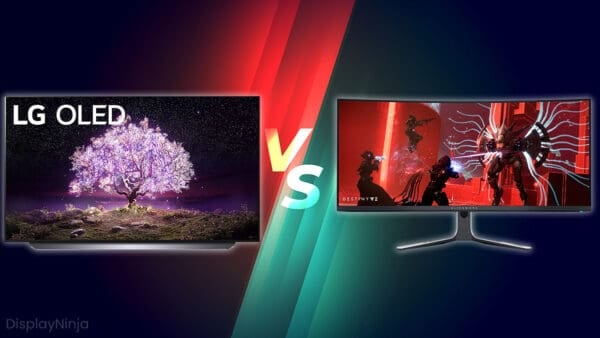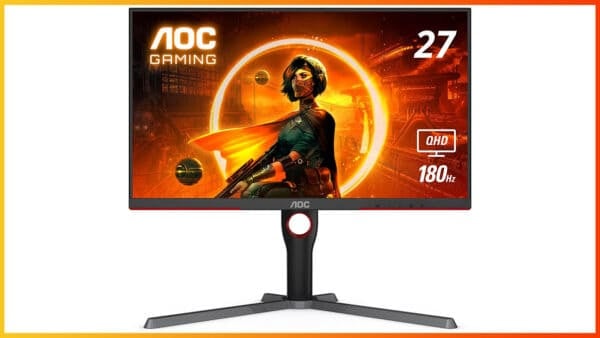Want a new monitor with proper HDR support but not sure which technology to go with? We’ll help you choose!
When it comes to OLED panels, most users prefer QD-OLED due to their wider color gamut and higher color volume, which results in higher perceived brightness and more vibrant colors.
However, some W-OLED panels offer certain exclusive features, such as 1080p 480Hz Dual Mode, 5K2K ultrawide resolution, etc. So, the choice between the two comes down to personal preference.
As far as mini LED models are concerned, the monitor’s performance will vary depending on its panel type, response time, number of dimming zones, local dimming algorithm and more.
In comparison to OLED displays, mini LED monitors offer a significantly higher brightness and they don’t have the risk of burn-in, which some users might prefer over OLED’s infinite contrast ratio and instantaneous response times.
In this article, we’ll compare HDR image quality between the KTC G27P6S with a W-OLED MLA+ panel, the MSI MPG 321CURX with a QD-OLED panel, and the BenQ EX321UX with an IPS panel and an 1152-zone mini LED FALD backlight.
W-OLED vs QD-OLED
In the video above, we can see the difference in HDR image quality between the KTC G27P6S with a W-OLED MLA+ panel and the MSI MPG 321CURX with a QD-OLED panel.
Keep in mind that not all W-OLED and QD-OLED monitors deliver the same HDR image quality.
While most QD-OLED monitors have very similar PQ-EOTF tracking, resulting in similar image quality, W-OLED models are more varied when it comes to PQ-EOTF tracking, color accuracy, calibration, etc. W-OLED panels with MLA+ (Micro Lens Array) technology deliver a higher brightness than regular W-OLED.
The KTC G27P6S in particular had lower real scene brightness numbers than expected in our review, most likely in order to preserve panel longevity and reduce the risk of burn-in.
Now:
As you can see, even though the KTC G27P6S has a higher brightness specified (1300-nits for 1% APL, 275-nits 100% APL) than the MSI MPG 321CURX (1000-nits 3% APL, 250-nits 100% APL), the image appears brighter on the QD-OLED monitor.



This is because the monitor’s peak brightness specification only refers to white luminance.
However, here’s what happens when we measure color luminance.
Red color luminance, for instance, is similar for APLs of 10% and larger (W-OLED is slightly brighter around 25% APL), but for APLs of 10% and smaller, QD-OLED panels get significantly brighter.

Of course, due to the way the human eye perceives brightness, red color won’t actually appear 2.5x brighter for those highlights. In other words, it’s not a proper way to measure perceived brightness, but we still think it’s important to point it out in order to understand why QD-OLED panels appear brighter.
Their white luminance is lower, but they have higher color luminance, that is, brighter colors. In general, QD-OLED panels offer around 30% higher perceived color brightness.

This is partially because W-OLED panels have a white subpixel in addition to red, green and blue subpixels, which boosts white luminance but dilutes colors at low APLs, while QD-OLED combines red, green and blue to create white.
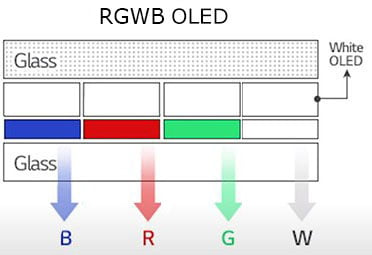
Below, you can see color luminance measures for green, blue, yellow, cyan and magenta.
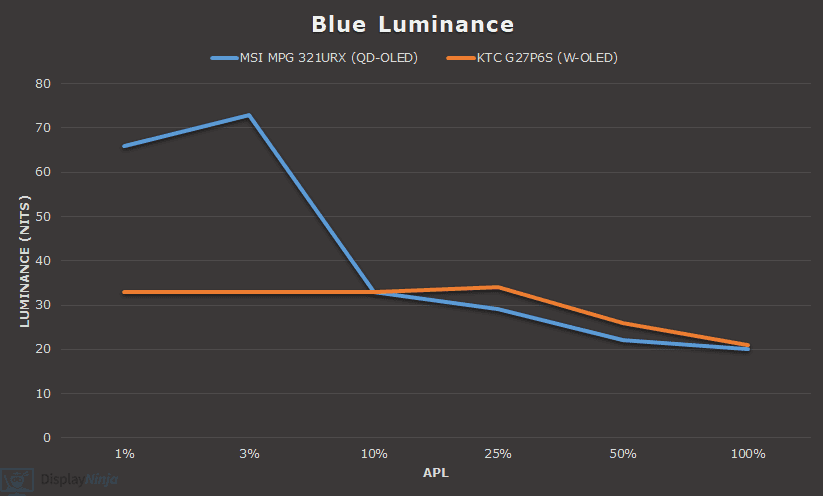
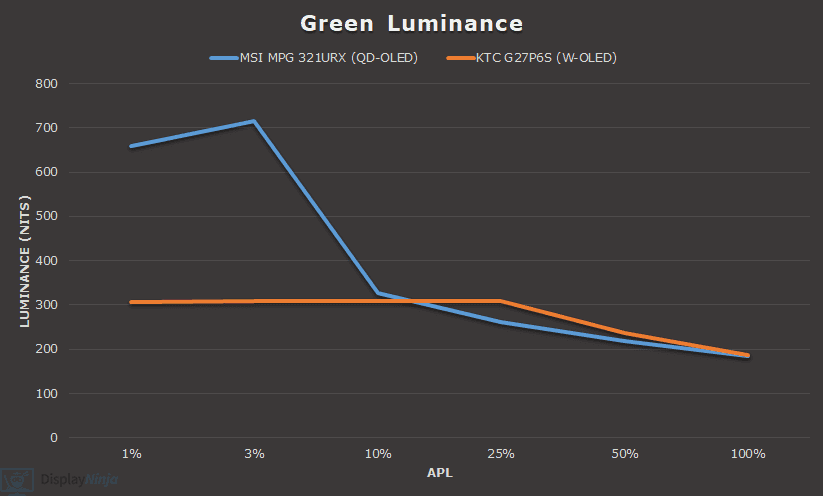
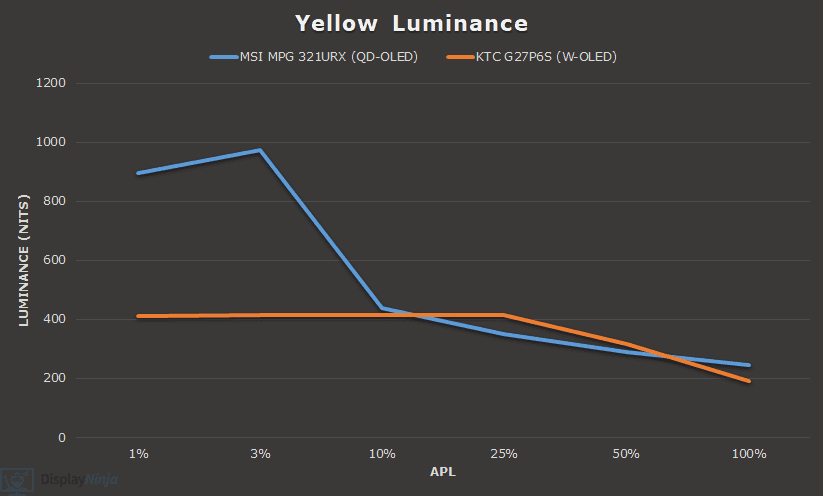
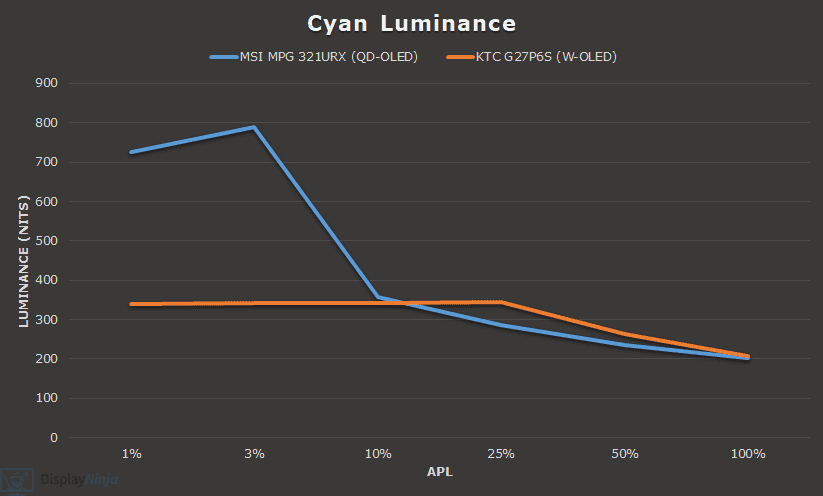

Another important factor that contributes to perceived brightness is the color gamut since more saturated colors appear brighter to the human eye, which is another advantage of QD-OLED panels.
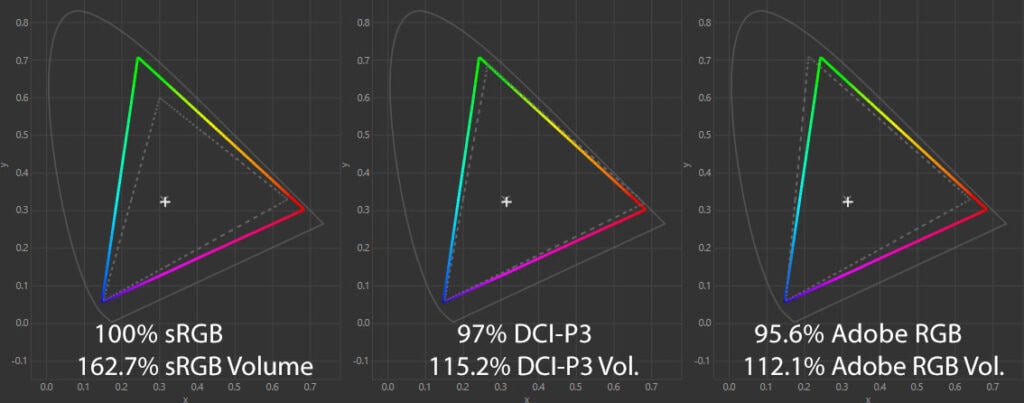
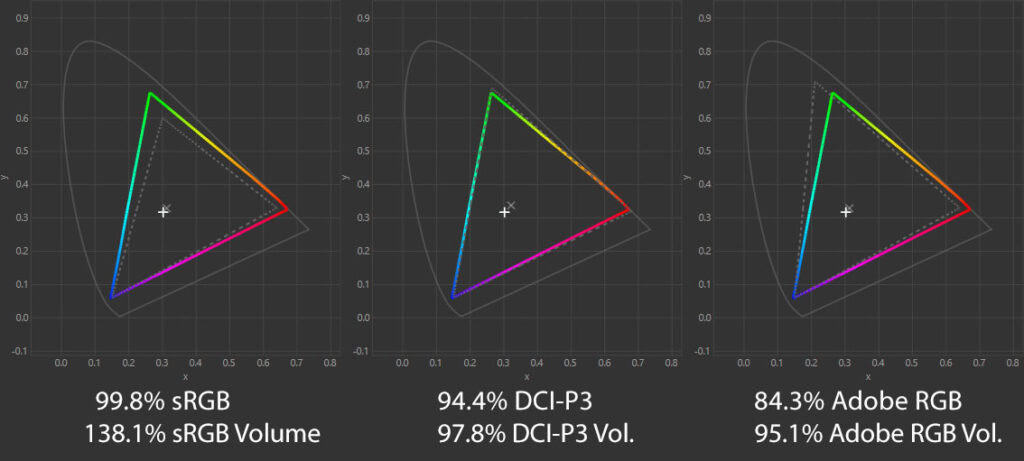
Naturally, there are other things that affect HDR image quality, such as screen resolution, accuracy (PQ EOTF tracking, color accuracy and color temperature), image uniformity (W-OLED panels are prone to DSE – dirty screen effect) and screen coating.
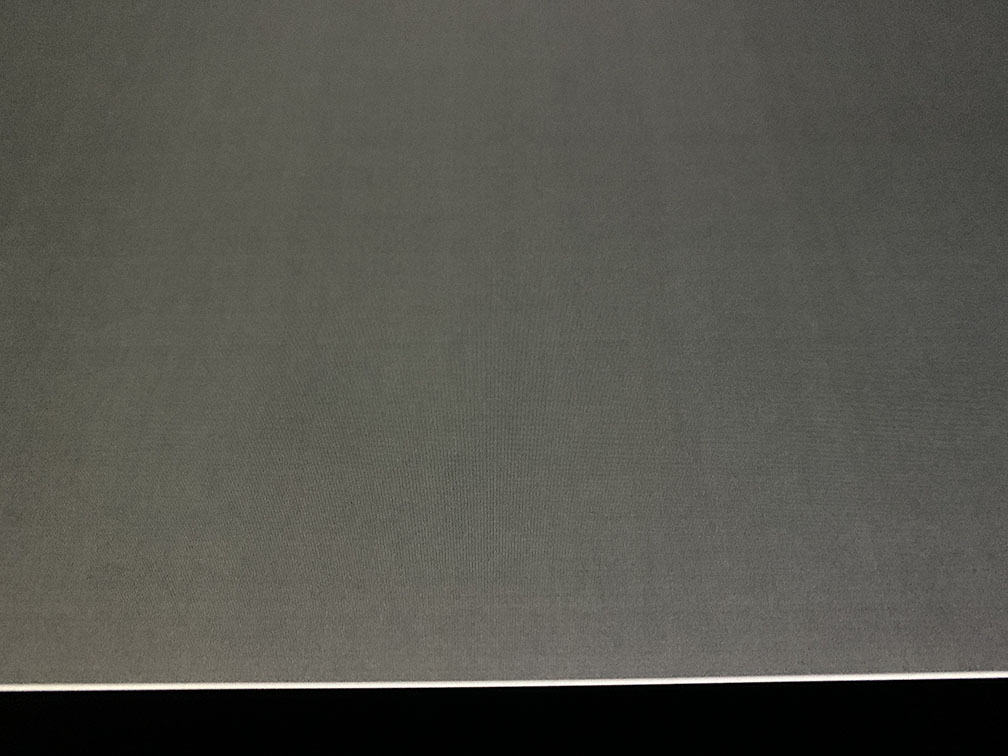
W-OLED panels have a heavy matte anti-glare coating that’s better at diffusing reflections but adds graininess to the image, while QD-OLED panels have a semi-glossy coating that results in a more vivid image but is more reflective.
These panels also have different subpixel layouts. On LG’s older W-OLED RWBG panels and Samsung’s older diamond-shaped triangular RGB panels, there is noticeable colored fringing on small text and fine details.
However, with newer LG’s W-OLED RGWB and Samsung’s more square-shaped triangular RGB subpixel layouts, these are no longer an issue, especially on higher pixel density displays.
We have a list of all QD-OLED and W-OLED monitors available.
Mini LED vs OLED
In the video above, you can see the difference in image quality between the BenQ EX321UX and the MSI MPG 321CURX.
Due to their higher brightness, mini LED LCDs are better suited for brighter rooms and showing bright content (scenes in daylight, snow, etc.) at the cost of occasional blooming in certain scenes.
OLED displays are superior at showing darker content (scenes at night and with contrasting elements, such as fireworks, stars in the night sky, etc.) thanks to their infinite contrast ratio and per-pixel dimming, but you have to mind the lighting in your room due to their limited brightness.
At around 4:18 mark in the video, you can see how QD-OLED struggles with scenes with a lot of bright elements, such as the snow scene where the monitor’s ABL (Automatic Brightness Limiter) kicks in and causes those jumps in brightness for a few seconds.
In the next scene, at around 4:41, you can see the blooming artifacts following the flying birds on the BenQ EX321UX. To be fair, both of these scenes are extreme examples that we haven’t encountered while watching other content, but it’s a good illustration of how both technologies have their strong and weak points.
In general though, while watching HDR scenes on both monitors side by side, we concluded that some scenes look better on the mini LED display, other scenes look better on the QD-OLED screen and some scenes look very similar.
We’ve also measured white and color luminance at different APLs with the BenQ EX321UX. As you can see, for small < 3% APLs, color luminance is similar to that of QD-OLED panels, but for larger APLs, both color and white luminance get significantly higher.
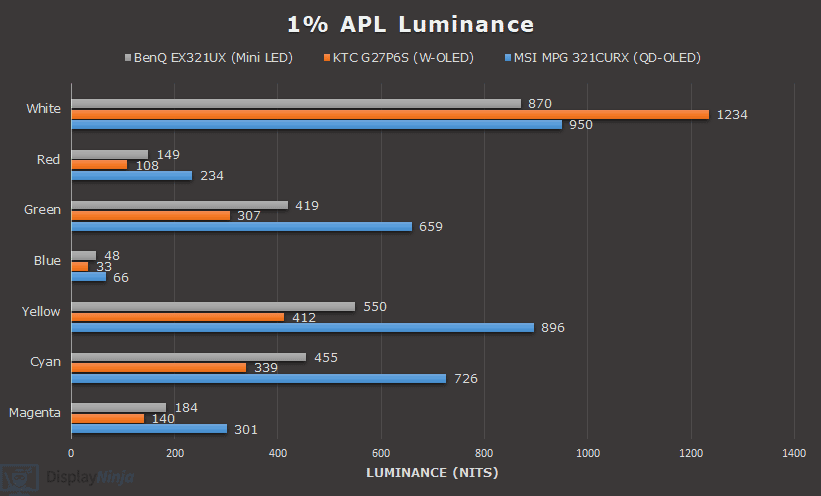
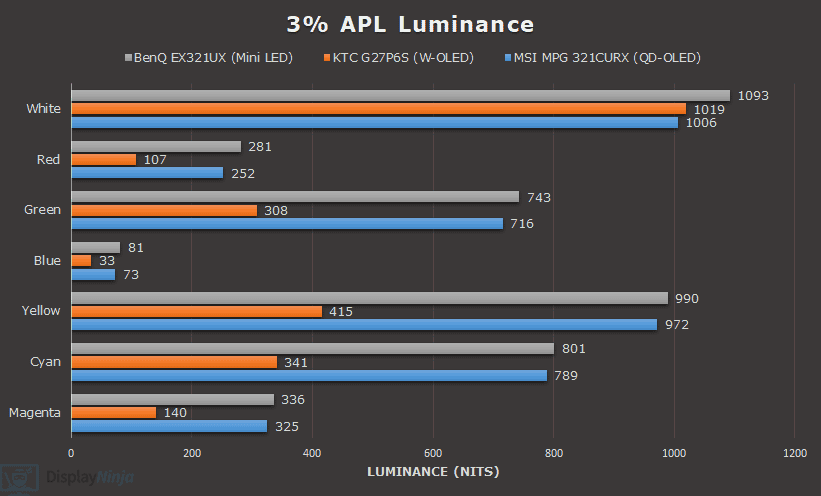
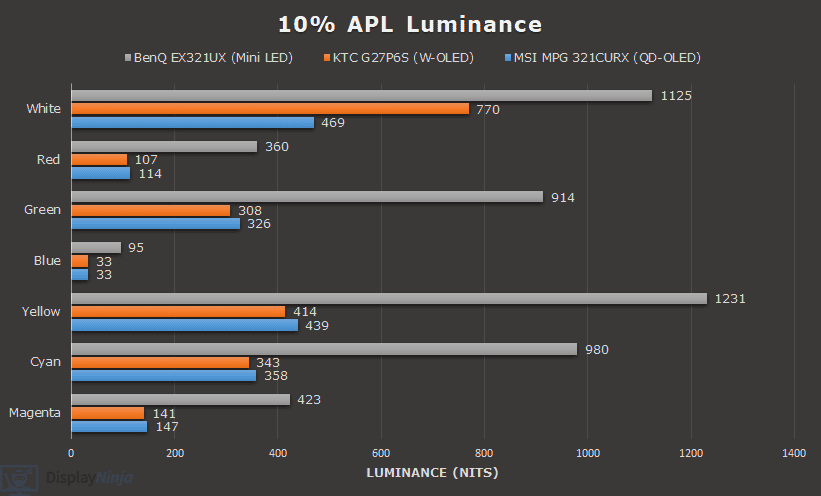
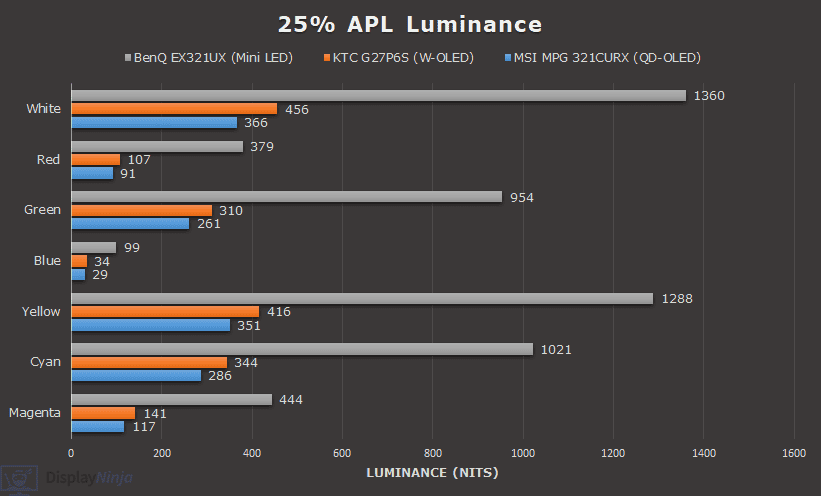
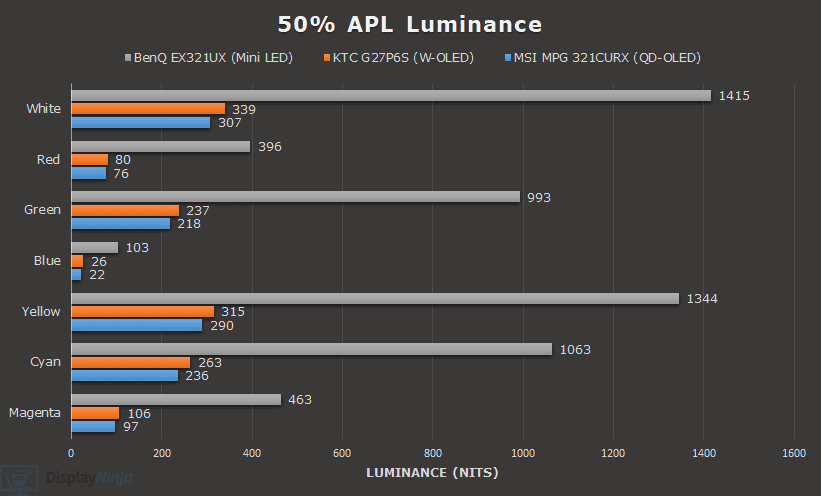

Here are our results from some real-scene tests.
Sunlight in ‘A Perfect Planet’ | Sign in ‘Cyberpunk 2077’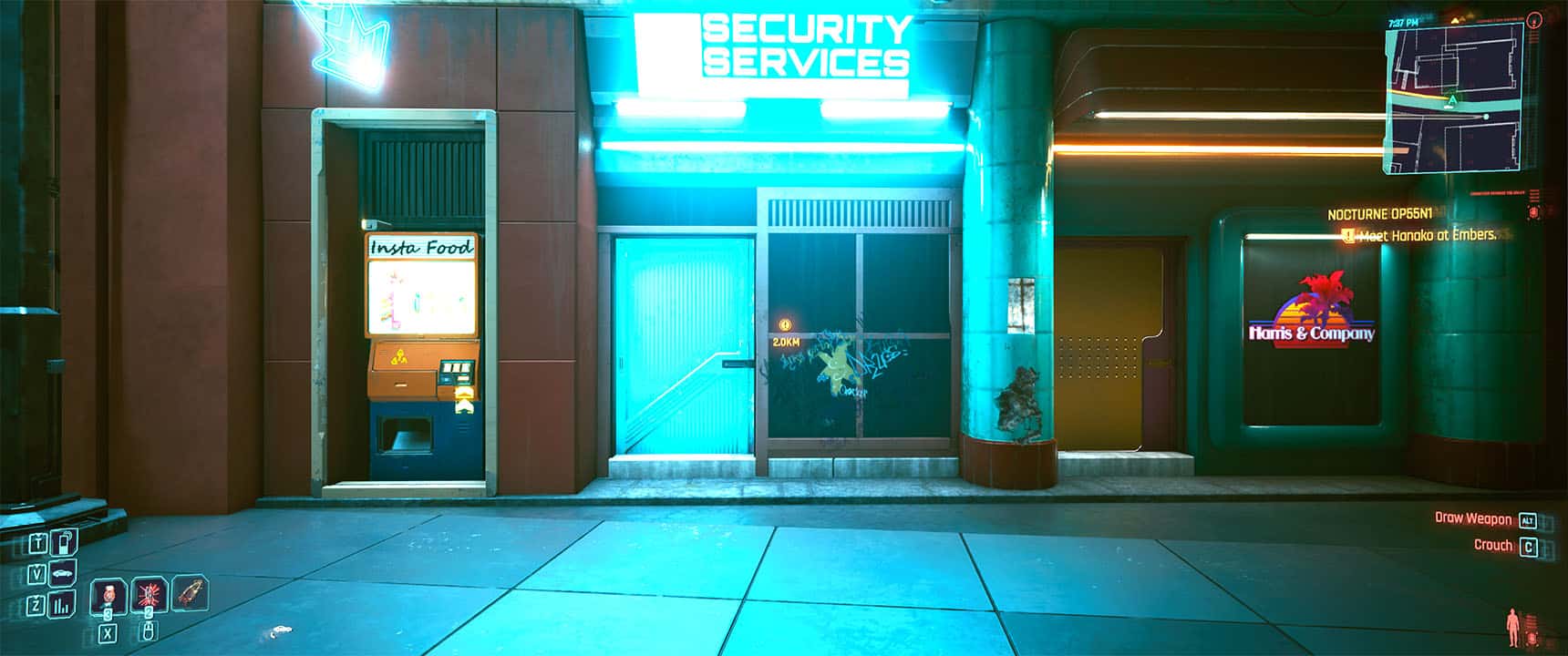 | Small flash from ‘Chasing The Light’ | Large flash from ‘Chasing The Light’ | Lightning in ‘A Perfect Planet’ | Solar flare in ‘A Perfect Planet’ | Sunlight in‘ A Perfect Planet’ | |
| KTC G27P6S (W-OLED MLA+) | 317-nits | 645-nits | 739-nits | 313-nits | 602-nits | 183-nits | 216-nits |
| MSI MPG 321CURX (QD-OLED) Peak 1000 nits | 538-nits | 731-nits | 974-nits | 328-nits | 549-nits | 108-nits | 113-nits |
| MSI MPG 321CURX (QD-OLED) True Black 400 | 429-nits | 455-nits | 452-nits | 310-nits | 450-nits | 201-nits | 207-nits |
| BenQ EX321UX (Mini LED IPS) | 792-nits | 1231-nits | 1140-nits | 1440-nits | 579-nits | 309-nits | 317-nits |
| MSI MPG 341CQPX (QD-OLED) Peak 1000 nits | 520-nits | 672-nits | 970-nits | Not measured | Not measured | Not measured | Not measured |
| ASUS PG27AQDM (W-OLED) | 515-nits | 741-nits | Not measured | Not measured | Not measured | Not measured | Not measured |
Finally, keep in mind that not all mini LED monitors behave the same. Their performance will vary depending on the panel type, the number of dimming zones, and the local dimming algorithm.
We have a list of all mini LED monitors, which you can filter by the number of dimming zones, panel type, etc.
For instance, mini LED monitors with VA panels have a higher native contrast ratio, resulting in deeper blacks and fewer blooming artifacts, but they don’t have as wide viewing angles and usually not as fast response times as IPS models.
The local dimming algorithm in the BenQ EX321UX is tuned to minimize blooming artifacts, which is why its brightness is a bit lower for small APLs, though still high enough for punchy highlights.
Its main downside is that when watching videos with wider aspect ratios (black bars at the top and bottom of the screen), the bars aren’t completely dimmed, so the black level is slightly elevated.
Check out our full reviews of the BenQ EX321UX, the MSI MPG 321CURX and the KTC G27P6S for more details. We plan to add more OLED and mini LED displays to these comparisons in the future.
Conclusion
Overall, all three display technologies have their advantages and disadvantages.
For OLED displays, we prefer QD-OLED due to their wide color gamut, higher color luminance and semi-glossy screen finish. However, W-OLED panels can also deliver an amazing HDR image quality.
If you want an OLED monitor with a matte anti-glare coating for better reflection handling (albeit at a cost of some added image graininess), a model with a 5120×2160 ultrawide resolution or a 4K 240Hz monitor with a 1080p 480Hz Dual Mode, W-OLED is still worth considering.
In case you’re worried about image burn-in and/or want a monitor with higher brightness rather than OLED’s infinite contrast and instantaneous response times, mini LED is the way to go.


